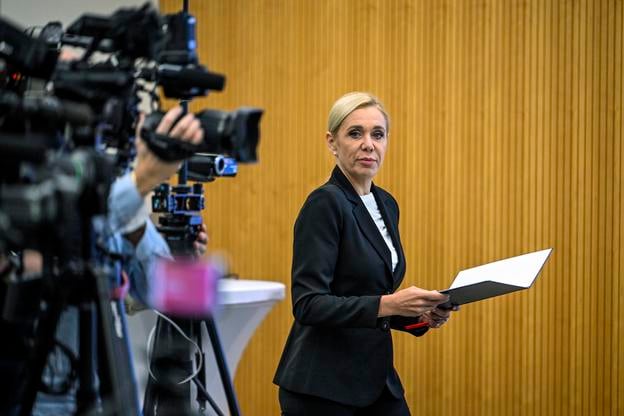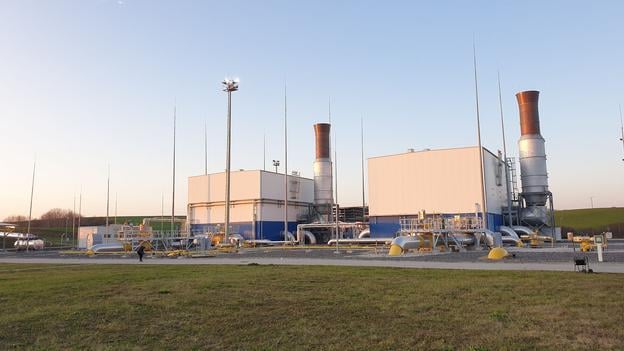The blast came just before dawn. On 21 March, a gas metering station in the Russian town of Sudzha—barely a kilometre from the Ukrainian border—was rocked by an explosion, stifling a crucial artery in Europe’s once-dominant Russian gas network. The damage, which occurred only two days after Russia and Ukraine agreed to a limited ceasefire halting attacks on energy infrastructure, may prove decisive for Prime Minister Robert Fico’s ambition to restart the transit of Russian gas across Ukraine into the European Union.
The station at Sudzha, long the principal conduit for Russian gas and oil entering Ukraine en route to Slovakia, Hungary, Austria and Italy, has not seen any flow since the start of the year. That was when the five-year contract between Russia’s Gazprom and Ukraine’s state operator Naftogaz expired. Roughly 42 million cubic metres of gas passed through Sudzha each day before the agreement lapsed—via the Bratstvo (Brotherhood) pipeline and the Druzhba (Friendship) oil route—names that now feel almost tragic in their irony.
A war-damaged pipeline, a stalled agenda
Since the war began, the EU has been weaning itself off Russian gas, seeking alternatives in liquefied natural gas (LNG) from the US and pipeline supplies from Norway and Azerbaijan. But Slovakia, a landlocked country heavily dependent on energy imports, remains exposed. Fico, elected in autumn 2023 on a populist and often pro-Russian platform, has made no secret of his desire to revive Russian gas transit through Ukraine—a policy that puts him at odds with much of the bloc.
Before Christmas, PM Fico travelled to Moscow for a meeting with President Vladimir Putin, hoping to secure the renewal of Russian gas transit through Ukraine. But the situation has not changed since.
In early March, Fico threatened to block the conclusions of a key European Council summit unless the final declaration mentioned the restoration of gas transit via Ukraine. He did not get what he wanted. The document merely nodded towards “intensified efforts” by the European Commission, Slovakia and Ukraine to find “viable solutions” to the problem.
“This was always a fantasy,” said opposition MP and energy expert Karel Galek, a former deputy economy minister, who described the idea of offering guarantees to Vladimir Putin in a war zone as “nonsense” back in December. “Fico’s dream of Russian gas is over,” he posted on Facebook after the Sudzha explosion.
But the Slovak government remains undeterred. Economy Minister Denisa Saková, of Fico’s coalition partner Hlas (Voice), argues that restoring transit would help lower prices across the continent. “We have long said this would benefit not just Slovakia and Austria but the entire European Union,” she told journalists, citing a Goldman Sachs analysis that projected a drop in gas prices from over €40 per megawatt-hour to €22 if transit resumed.
Slovakia pushes for cheaper gas
The Commission, however, is split. EU Energy Commissioner Dan Jørgensen has said he does not expect any renewal of transit. Commission President Ursula von der Leyen, by contrast, has pledged full cooperation with Slovakia and Ukraine to try to restart the flow, according to Saková.
Yet technical, financial and political obstacles abound. Slovakia’s state energy firm, SPP, recently announced the creation of a subsidiary—SPP Plus—that would be tasked with purchasing and transporting gas across Ukraine. Its CEO, Vojtech Ferencz, said deliveries could begin in autumn, once permits are secured. The gas need not be Russian, officials note; supplies could, in theory, come from Azerbaijan. But a recent attempt to route Azeri gas through Russia and Ukraine failed due to disagreements between Moscow and Baku.
And Ukraine, fiercely opposed to facilitating Russian energy exports that finance its invader’s war, has shown no signs of changing course. “Nothing indicates Kyiv will allow Russian transit to resume,” said Karel Hirman, a former Slovak economy minister. “It would be incredibly risky while the war is ongoing.”
Insurance alone would be prohibitively expensive, if even available. Most alternative transit points—such as the Sochranivka station—are under Russian occupation or damaged, and lack the capacity of Sudzha. Reopening them would require a new Gazprom–Naftogaz agreement, reconstruction of infrastructure, and costly upgrades to compressor stations.
Meanwhile, SPP is relying on a piecemeal solution. Hungary has released extra capacity on a southern route, allowing more Russian gas to reach Slovakia from April. But volumes remain far lower than through the old Ukraine corridor, and bottlenecks—especially in Serbia—severely limit the flow. Expanding those routes would cost billions, and Serbia is not an EU member state.
Saková has appealed for solidarity. “We helped Ukraine, and continue to do so—humanitarian aid, hosting refugees,” she said. “Now we ask for help in return.”



 SPP logo (source: TASR - Martin Baumann)
SPP logo (source: TASR - Martin Baumann)
 Economy Minister Denisa Saková (source: SITA)
Economy Minister Denisa Saková (source: SITA)
 A new section of the compressor station in Veľké Zlievce, located in the Veľký Krtíš district, which serves the only gas interconnection between Slovakia and Hungary, approximately 19 kilometres from the station, on 25 November 2019. (source: TASR - Branislav Caban)
A new section of the compressor station in Veľké Zlievce, located in the Veľký Krtíš district, which serves the only gas interconnection between Slovakia and Hungary, approximately 19 kilometres from the station, on 25 November 2019. (source: TASR - Branislav Caban)